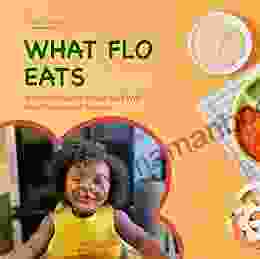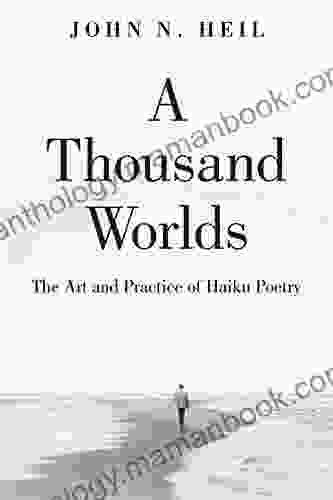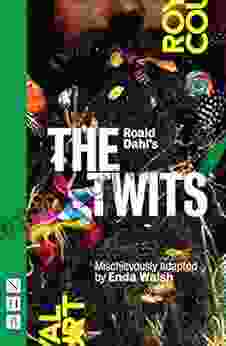The Art and Practice of Haiku Poetry: A Comprehensive Guide

Haiku, a traditional Japanese poetic form, has captivated readers and writers for centuries with its brevity and evocative imagery. This guide explores the art and practice of haiku poetry, providing an in-depth understanding of its history, structure, and techniques. Whether you are a seasoned poet or a curious reader, this comprehensive guide will inspire and inform your journey into the world of haiku.
A Brief History of Haiku Poetry
Haiku originated in Japan during the 17th century as a type of short form poetry. It evolved from the earlier renga, a collaborative linked verse form, and was initially known as hokku, the opening stanza of a renga. Over time, hokku became an independent poetic form, known for its distinct structure and evocative imagery.
4.6 out of 5
| Language | : | English |
| File size | : | 19579 KB |
| Screen Reader | : | Supported |
| Print length | : | 265 pages |
| Lending | : | Enabled |
Early haiku poets often found inspiration in nature, capturing the beauty and transience of the natural world. Renowned haiku masters such as Matsuo Bashō, Yosa Buson, and Kobayashi Issa are celebrated for their profound and evocative haiku that encapsulate the essence of Japanese culture and aesthetics.
The Structure of Haiku
Haiku poetry is characterized by its unique structure, which consists of three unrhymed lines with a specific syllable count:
- First line: 5 syllables
- Second line: 7 syllables
- Third line: 5 syllables
This 5-7-5 syllable pattern is a defining characteristic of haiku poetry, contributing to its brevity and impact.
Essential Techniques of Haiku Writing
While the structure of haiku is important, it is the techniques employed by haiku poets that truly bring these poems to life. Here are some essential techniques to consider when writing haiku:
- Kireji (cutting word): A kireji is a word or phrase that creates a pause or break within the haiku. It helps to divide the poem into two parts, creating a sense of tension and anticipation.
- Kigo (seasonal reference): A kigo is a word or phrase that references a specific season or time of year. This helps to connect the haiku to the natural world and evoke a sense of place and time.
- Juxtaposition: Juxtaposition is a technique of placing two contrasting images or ideas side by side. This can create a sense of surprise or insight, and help to deepen the meaning of the haiku.
Tips for Writing Haiku
If you are interested in writing haiku, here are some tips to help you get started:
- Observe the world around you: Pay attention to the details of nature, the changing seasons, and the human experience. These observations can become the inspiration for your haiku.
- Choose specific and evocative language: Use precise and vivid words that paint a picture in the reader's mind.
- Experiment with different kireji and kigo: Explore how these techniques can add depth and meaning to your haiku.
- Read and study other haiku: Gain inspiration and learn from the masters of haiku poetry.
- Don't be afraid to experiment: Haiku is a flexible form that allows for creativity and personal interpretation.
Examples of Haiku Poetry
To further illustrate the art of haiku, here are some examples of haiku by renowned poets:
- Matsuo Bashō:
- On a withered branch
- A crow has settled
- Autumn evening
- Yosa Buson:
- A world of dew
- And within every dewdrop
- A world of struggle
- Kobayashi Issa:
- World of dew
- And within every dewdrop
- A world of struggle
Haiku poetry, with its brevity and evocative imagery, has the power to capture the essence of a moment and convey profound truths about the human experience. Whether you are a seasoned poet or a curious reader, the art and practice of haiku offers a rewarding journey into the world of language, nature, and the human spirit. By understanding the history, structure, and techniques of haiku, you can deepen your appreciation for this traditional Japanese poetic form and perhaps even find inspiration to write your own haiku.
4.6 out of 5
| Language | : | English |
| File size | : | 19579 KB |
| Screen Reader | : | Supported |
| Print length | : | 265 pages |
| Lending | : | Enabled |
Do you want to contribute by writing guest posts on this blog?
Please contact us and send us a resume of previous articles that you have written.
 Top Book
Top Book Novel
Novel Fiction
Fiction Nonfiction
Nonfiction Literature
Literature Paperback
Paperback Hardcover
Hardcover E-book
E-book Audiobook
Audiobook Bestseller
Bestseller Classic
Classic Mystery
Mystery Thriller
Thriller Romance
Romance Fantasy
Fantasy Science Fiction
Science Fiction Biography
Biography Memoir
Memoir Autobiography
Autobiography Poetry
Poetry Drama
Drama Historical Fiction
Historical Fiction Self-help
Self-help Young Adult
Young Adult Childrens Books
Childrens Books Graphic Novel
Graphic Novel Anthology
Anthology Series
Series Encyclopedia
Encyclopedia Reference
Reference Guidebook
Guidebook Textbook
Textbook Workbook
Workbook Journal
Journal Diary
Diary Manuscript
Manuscript Folio
Folio Pulp Fiction
Pulp Fiction Short Stories
Short Stories Fairy Tales
Fairy Tales Fables
Fables Mythology
Mythology Philosophy
Philosophy Religion
Religion Spirituality
Spirituality Essays
Essays Critique
Critique Commentary
Commentary Glossary
Glossary Bibliography
Bibliography Index
Index Table of Contents
Table of Contents Preface
Preface Introduction
Introduction Foreword
Foreword Afterword
Afterword Appendices
Appendices Annotations
Annotations Footnotes
Footnotes Epilogue
Epilogue Prologue
Prologue Sally Larsen
Sally Larsen Jack Whyte
Jack Whyte Sinistre Ange
Sinistre Ange Hayden Thorne
Hayden Thorne L Frank Baum
L Frank Baum Fernanda Young
Fernanda Young Ronald Kessler
Ronald Kessler Shae Marie
Shae Marie Terry Miles
Terry Miles Stella Marie Alden
Stella Marie Alden Gordon Lloyd
Gordon Lloyd Peter C Brown
Peter C Brown Sheri Graham
Sheri Graham Samantha Cleaver
Samantha Cleaver Robert Bryndza
Robert Bryndza Mike Kim
Mike Kim Dan Southerland
Dan Southerland Wish Ronquillo Peacocke
Wish Ronquillo Peacocke Allen Lyne
Allen Lyne Kathy Seaman Shaw
Kathy Seaman Shaw
Light bulbAdvertise smarter! Our strategic ad space ensures maximum exposure. Reserve your spot today!
 Jacques BellFollow ·18.1k
Jacques BellFollow ·18.1k Alex ReedFollow ·14.1k
Alex ReedFollow ·14.1k Ronald SimmonsFollow ·14.8k
Ronald SimmonsFollow ·14.8k Russell MitchellFollow ·10.1k
Russell MitchellFollow ·10.1k Ernest J. GainesFollow ·2.9k
Ernest J. GainesFollow ·2.9k Robbie CarterFollow ·7.2k
Robbie CarterFollow ·7.2k Harry HayesFollow ·3.1k
Harry HayesFollow ·3.1k Kenneth ParkerFollow ·5.6k
Kenneth ParkerFollow ·5.6k

 Vernon Blair
Vernon BlairThe Woman I Met in My Dream: An Unforgettable Night of...
As the veil of night...

 Carlos Fuentes
Carlos FuentesThe Ultimate Guide to Healthy Eating for Toddlers: Meal...
As a parent of a...

 Peter Carter
Peter CarterInside My Autistic Mind: A Journey of Self-Discovery and...
Autism spectrum disorder (ASD) is a...

 Isaac Asimov
Isaac AsimovA Journey Through Jane Austen's Literary Masterpieces:...
Jane Austen, the renowned English...

 Hank Mitchell
Hank MitchellAdvancements in Textiles: Science and Technology by...
The textile...

 Troy Simmons
Troy SimmonsRecovery Road: An Odyssey of Hope and Redemption by...
Recovery Road is a...
4.6 out of 5
| Language | : | English |
| File size | : | 19579 KB |
| Screen Reader | : | Supported |
| Print length | : | 265 pages |
| Lending | : | Enabled |










